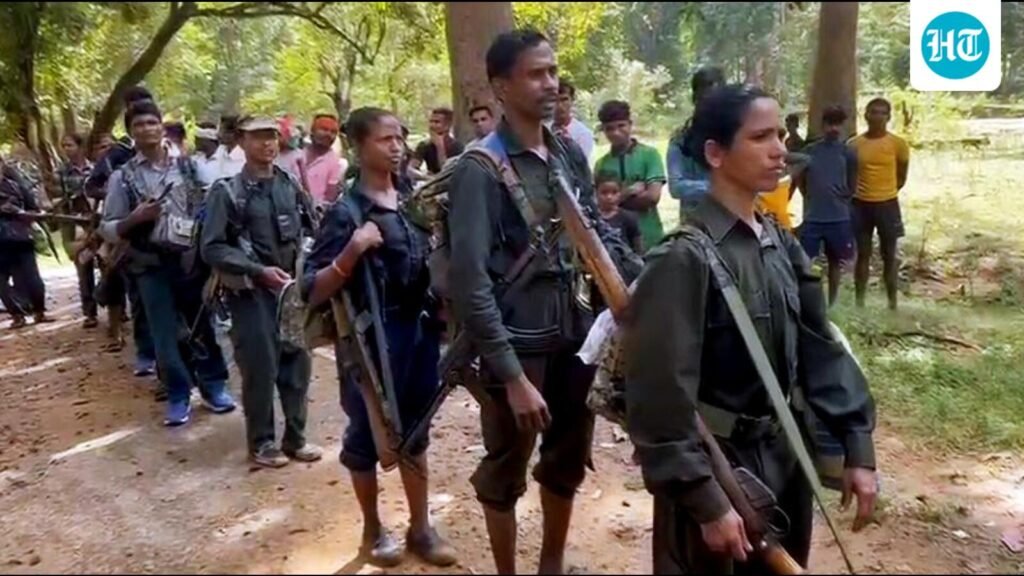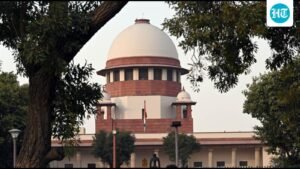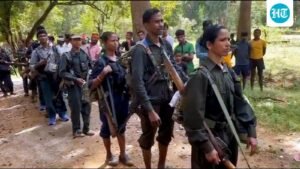
The Maoist insurgency is unraveling in its last bastion — the tribal heartland of the Dandakaranya region (DKR). A large section of the divided Maoist leadership, through recently released press notes, has apologized to people saying that, in the process of revolution, the leadership made several tactical mistakes. The report card of the nearly half a century of Maoist action in DKR vis-à-vis tribal welfare is rather grim. This has all been about the exploitation of tribal aspirations for the ulterior motives of the Maoists.

The Maoist cadres entered DKR in the early 1980s, after suffering setbacks in Andhra Pradesh (AP). Their aim was to secure a safe haven and not to involve the local tribal population in the political struggle. Since the situation in AP did not become favorable again for the Maoists, they were forced to stay on in DKR. The Maoists then started taking up tribal issues as they vied for the support of the local tribal population for sustenance.
The first issue taken up centered on the wages paid by contractors for the collection of tendu patta (leaf of Tendu tree), which is used to make beedisThey started to negotiate better rates for the collection of tendu patta —tribal livelihood in the area depends on this. Along with that, they also started extorting from the Tendu contractors, with a cascading effect that diminished the earnings of the tribals. The Maoists also began extorting from mining corporations operating in the area. In the process, they started spending most of their time running their organization, launching attacks, and preserving cadres — thereby deviating from their promise to fight for the tribal cause.
The Maoists used to generate a sizeable amount of revenue from their industry of protection, extortion, kidnapping and indirect taxation. It is reported that more than 50% of the income generated was allocated for military capability building, obviously at the cost of other developmental agendas — establishing the priorities in the name of revolution.
The overthrow of the democratic polity in India forms the roots of Maoist ideology. They undermine and reject the enabling function of democracy, irrespective of fault-lines, which empowers the marginalised. By exhorting the tribal population to boycott elections, the Maoists deny people their only instrument of exercising and expressing power. Similarly, the Maoists often indulged in controlling the elections and functioning of the village body, the gram sabha (GS), to suit their own requirements. Although the government’s record on empowering the GS is no better, the rebels weren’t transparent in their conduct here. Rather, they preferred to govern the areas under their control through arbitrary kangaroo courts.
The tribals form the backbone of the Maoist organization in terms of the rank and file under a non-inclusive leadership. The non-tribals from AP, till today, have occupied the outfit’s policy-making positions, with foot-soldiering left to the tribal cadres. It is this exclusive class of leaders that is in news these days, be it Basavraju, Venugopal Rao, Rupesh, Bhaskar, Devuji, and Chandranna, among others. (The recently slain Madvi Hidma, an adivasi leader, is more of an exception.) These leaders had a vast pool of tribal people at their disposal and were determined to ensure that the fight against the government continued down to the last tribal.
The conflict gave impetus to the weaponisation of tribal society. The tribal, as part of District Reserve Guard (DRG) or the Bastariya battalion, is now killing the Maoist tribal. In all this, no one is engaging the tribal to ascertain his mind. The middle ground for the tribals has continuously shrunk, confining them to the binary of being either with the Maoists or with the State. The tribals have no stakes in the Maoist ideology; they were lured to participate in the insurgency to protect their jal,jungle,zameen (water, forests and land) and ended up with suffering, displacement, and a lack of development.
As per media reports, over the past 25 years, Chhattisgarh has seen 3,404 armed encounters, in which 1,541 Maoists, 1,315 security personnel and 1,817 civilians (mainly tribals) were killed. The data underlines the stories of uprooted families and scorched villages. Although the culpability of the State behind the sordid saga of destruction cannot be overlooked, it is the unreasonable ideology of Maoism in a democratic setup that cannot escape scrutiny. The Maoists have to be held accountable to the tribal society for the lives and the years lost — all to maintain an illusion of revolution. How history remembers the Maoists is too early to say; however, it is also a fact that, had it not been for them, the much-needed focus on the hinterland of DKR would never have manifested.
Shashank Ranjan, a retired colonel with experience in counter-insurgency operations, teaches at OP Jindal Global University, Haryana. The views expressed are personal






